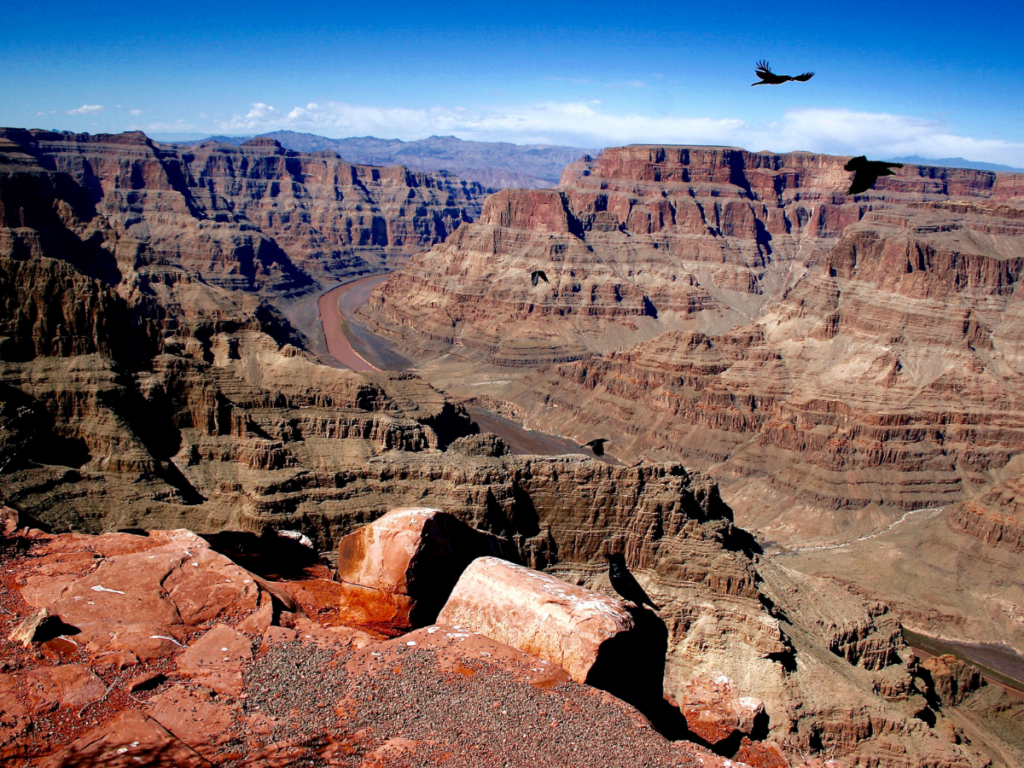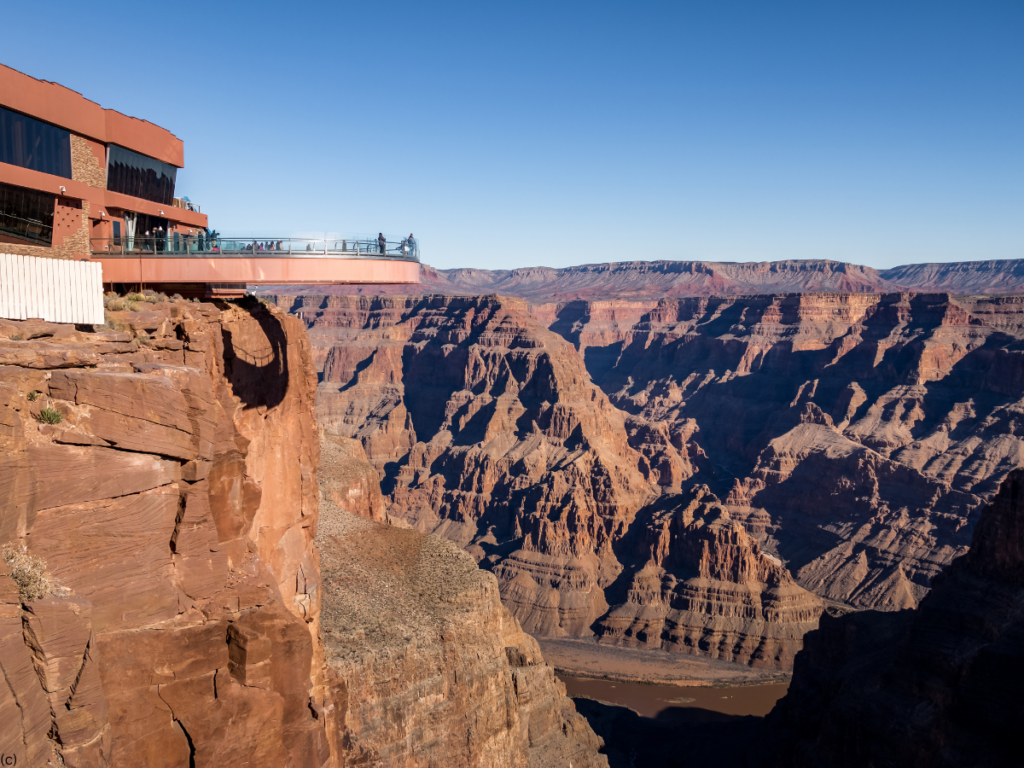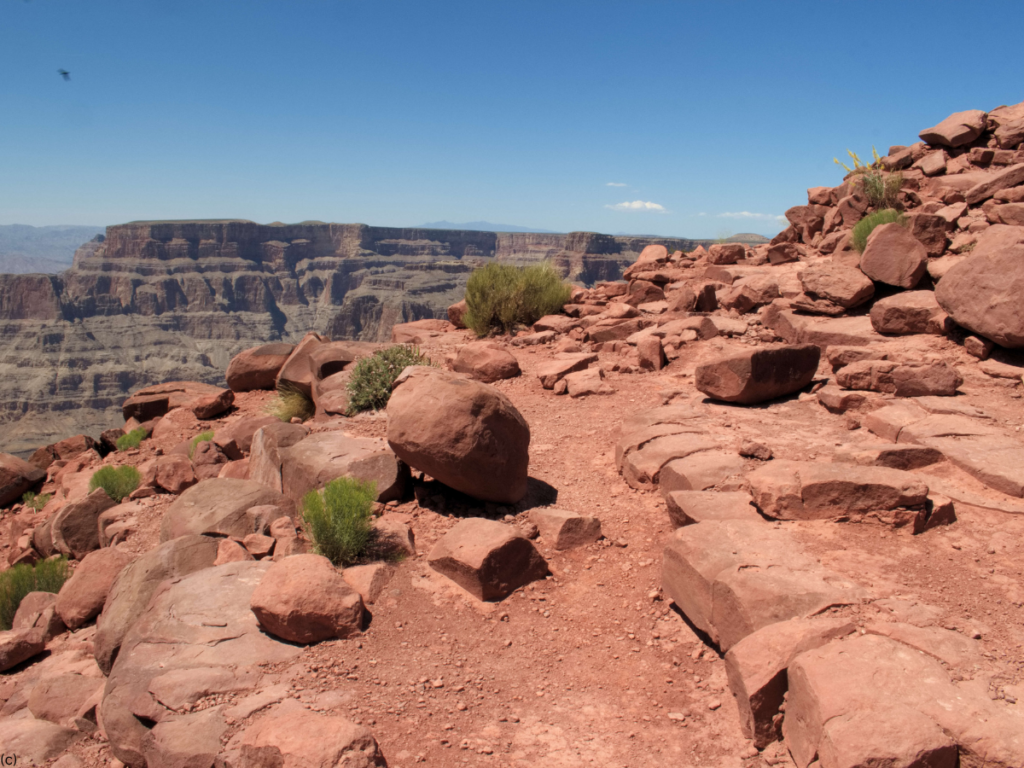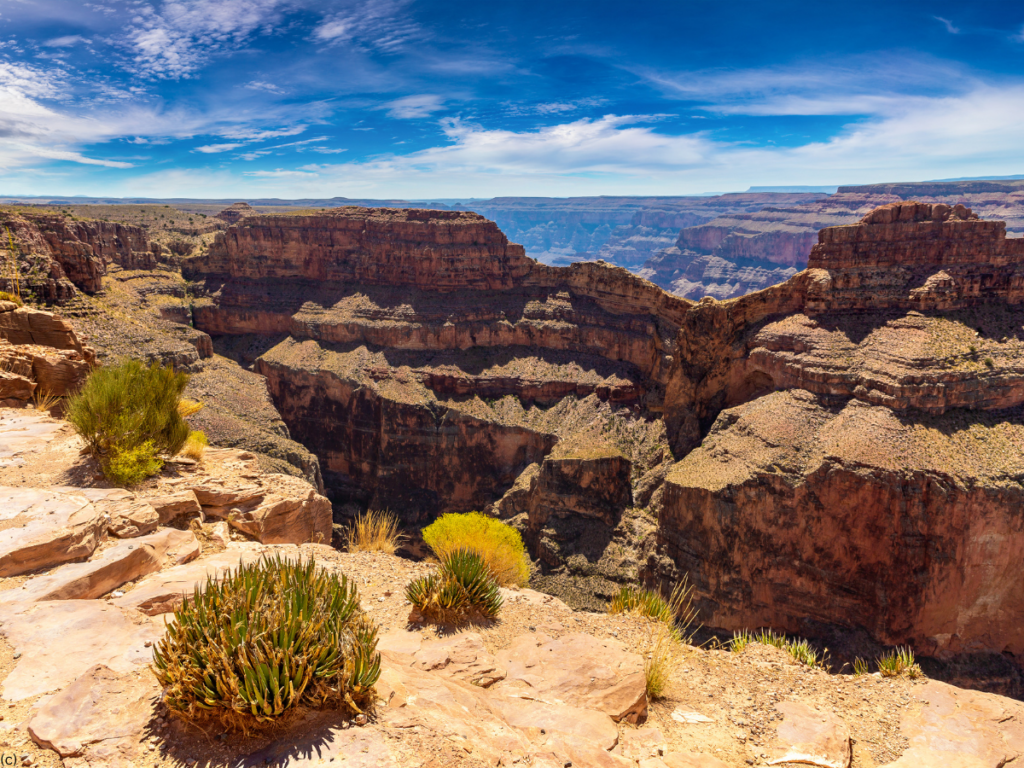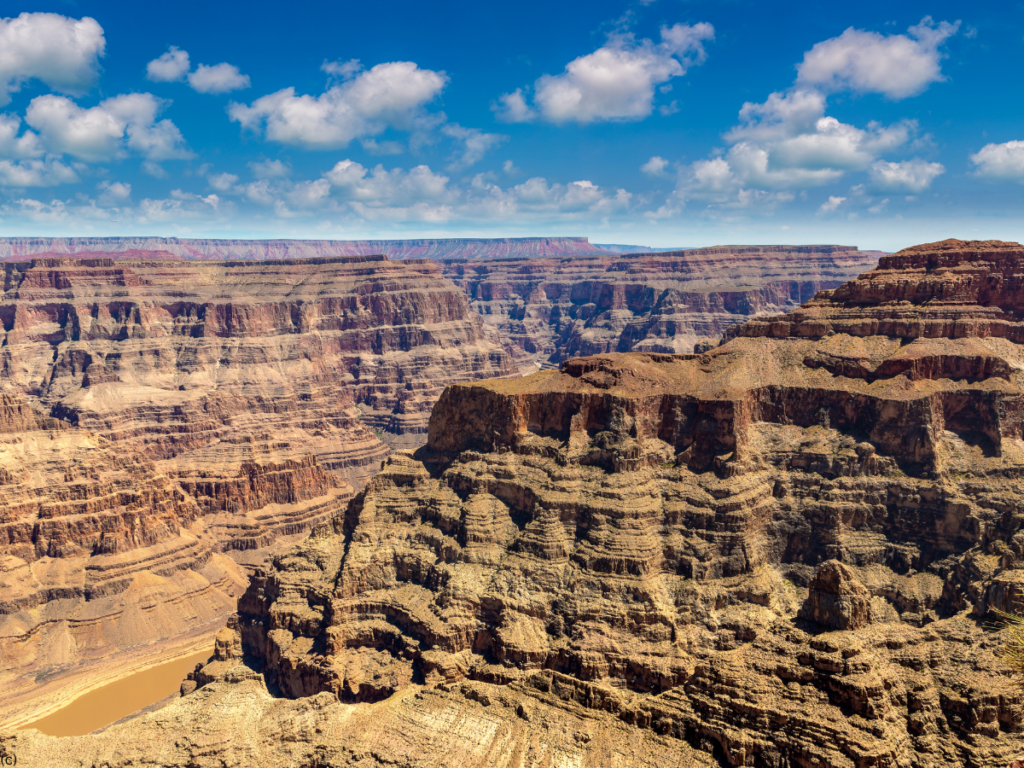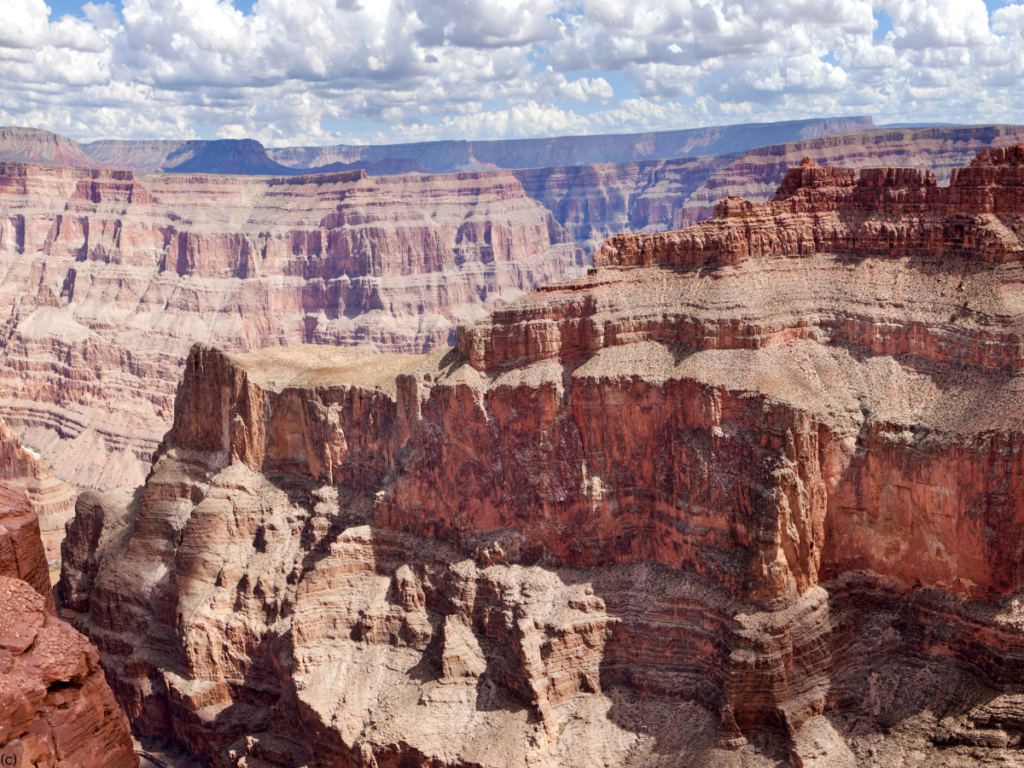
The Grand Canyon is one of the most awe-inspiring natural wonders in the world, drawing millions of visitors each year. While the South Rim and North Rim are the most well-known and frequently visited areas, the West Rim offers a unique and exciting perspective on this iconic landscape. Managed by the Hualapai Tribe, the West Rim is home to the famous Grand Canyon Skywalk, stunning viewpoints, and a rich cultural history.
For those looking to explore the Grand Canyon from a different vantage point, the West Rim is an excellent choice. In this comprehensive guide, we’ll cover everything you need to know for a memorable visit, including travel tips, must-see attractions, and practical advice.
Introduction to the West Rim
The West Rim of the Grand Canyon is located about 125 miles from Las Vegas, making it a popular destination for day trips from the city. Unlike the South Rim, which is part of Grand Canyon National Park and managed by the National Park Service, the West Rim is managed by the Hualapai Tribe as part of the Hualapai Indian Reservation. This unique status means that the experience at the West Rim is different from the other rims of the Grand Canyon, offering visitors a blend of natural beauty and cultural experiences.
One of the major draws of the West Rim is its accessibility. The South Rim, while offering iconic views, requires a longer drive from major cities like Las Vegas or Phoenix. The West Rim, however, is a more convenient option for travelers with limited time who still want to experience the grandeur of the canyon. Additionally, the West Rim is open year-round, providing flexibility for visitors planning their trip.
Getting to the West Rim
The West Rim is easily accessible by car from Las Vegas, with a drive time of approximately two to two and a half hours. The route takes you through scenic desert landscapes and past the Hoover Dam, which is worth a stop along the way. From Las Vegas, take U.S. Route 93 South towards Boulder City, then continue on Highway 95 South until you reach the exit for Pierce Ferry Road. From there, follow the signs to the West Rim.
For those who prefer not to drive, several tour companies in Las Vegas offer guided tours to the West Rim. These tours typically include transportation, entrance fees, and sometimes additional activities like a helicopter ride or a boat tour on the Colorado River.
Another option is to fly to the West Rim. Helicopter and small plane tours depart from Las Vegas, offering a thrilling aerial view of the Grand Canyon before landing at the West Rim. These tours often include additional perks, such as VIP access to the Skywalk or a picnic lunch with a view of the canyon.
Entrance Fees and Tickets
As the West Rim is located on the Hualapai Indian Reservation, entrance fees are managed by the Hualapai Tribe. Unlike the South and North Rims, which are part of the National Park System, a different fee structure applies here. The basic entrance fee, known as the Legacy Package, grants access to the West Rim and includes shuttle transportation between key points of interest, including Eagle Point, Guano Point, and the Skywalk.
In addition to the basic entrance fee, there are several packages available that include additional experiences:
- Skywalk Ticket: For an additional fee, you can step out onto the Skywalk, a glass-bottomed bridge that extends 70 feet out over the canyon, offering breathtaking views of the canyon floor 4,000 feet below.
- Helicopter and Boat Tours: For those looking for an even more adventurous experience, you can upgrade your visit with a helicopter ride that takes you down to the canyon floor, followed by a boat tour on the Colorado River.
- Hualapai Ranch Experience: Some packages include a visit to the Hualapai Ranch, where you can experience a taste of the Old West with cowboy demonstrations, wagon rides, and other activities.
It’s recommended to purchase tickets in advance, especially during peak travel seasons. Online booking is available through the Grand Canyon West website, allowing you to secure your preferred package and avoid potential wait times at the entrance.
Must-See Attractions at the West Rim
The West Rim offers a variety of attractions that showcase the beauty of the Grand Canyon from unique perspectives. Here are the must-see spots:
- Grand Canyon Skywalk
The Skywalk is undoubtedly the most famous attraction at the West Rim. This glass-bottomed bridge extends 70 feet out over the canyon, providing a thrilling and unobstructed view straight down to the canyon floor. Standing on the Skywalk is an exhilarating experience that offers a perspective of the canyon that you can’t get anywhere else.
For those with a fear of heights, walking out onto the Skywalk can be daunting, but the views are well worth it. The glass is several inches thick and strong enough to hold several hundred people at once, so you can feel confident in its safety.
Photography is not allowed on the Skywalk itself, but professional photographers are on hand to capture the moment for you. You can purchase these photos at the gift shop after your visit.
- Eagle Point
Eagle Point is one of the main viewpoints at the West Rim and is home to the Skywalk. The point is named for a natural rock formation that resembles an eagle with its wings spread wide. The views from Eagle Point are stunning, offering a panoramic vista of the canyon and the Colorado River below.
In addition to the views, Eagle Point is also home to the Native American Village, where you can explore replicas of traditional dwellings from various Native American tribes. This area provides a fascinating insight into the cultural history of the Hualapai Tribe and other indigenous peoples of the region.
- Guano Point
Guano Point is another spectacular viewpoint at the West Rim, offering some of the best 360-degree views of the Grand Canyon. This area is named after a nearby bat guano mine that operated in the mid-20th century. Remnants of the old mining operation can still be seen, adding a historical element to the natural beauty of the area.
One of the highlights of Guano Point is the Highpoint Hike, a short but steep trail that takes you to the top of a rocky outcrop. From here, you’ll be rewarded with breathtaking views of the canyon and the Colorado River winding through it. Guano Point is also a great spot for photography, especially during sunrise and sunset when the canyon is bathed in golden light.
- Hualapai Ranch
For a taste of the Old West, visit the Hualapai Ranch, located near the entrance to the West Rim. This replica western town offers a range of activities, including cowboy demonstrations, wagon rides, and opportunities to try your hand at roping or archery. The ranch also has a restaurant where you can enjoy a hearty meal while taking in views of the canyon.
The Hualapai Ranch is a great place to relax and take a break from sightseeing, especially if you’re traveling with children. The atmosphere is fun and family-friendly, with plenty of activities to keep everyone entertained.
Practical Tips for Visiting the West Rim
To make the most of your visit to the Grand Canyon West Rim, here are some practical tips and advice:
- Timing Your Visit
The West Rim is open year-round, but the best times to visit are in the spring (March to May) and fall (September to November) when temperatures are milder. Summer can be extremely hot, with temperatures often exceeding 100°F (38°C), so if you’re visiting during this time, be sure to bring plenty of water and take breaks in the shade.
If you want to avoid crowds, consider visiting on a weekday or arriving early in the morning. The Skywalk and other viewpoints can get crowded, especially during peak tourist season, so getting an early start will allow you to enjoy the attractions with fewer people around.
- What to Bring
When visiting the West Rim, it’s important to come prepared. Here’s a list of essentials to bring with you:
- Water: The desert environment can be very dry, so it’s important to stay hydrated. Bring plenty of water, especially if you plan to do any hiking.
- Sun Protection: The sun can be intense, even in the cooler months. Be sure to wear sunscreen, a wide-brimmed hat, and sunglasses to protect yourself from the sun’s rays.
- Comfortable Footwear: You’ll be doing a fair amount of walking, so be sure to wear comfortable shoes with good support. If you plan to do any hiking, sturdy hiking boots are recommended.
- Camera: The views at the West Rim are spectacular, so don’t forget your camera or smartphone to capture the memories.
- Light Jacket: Even in the summer, temperatures can be cool in the early morning or late evening, so it’s a good idea to bring a light jacket.
- Respect the Land and Culture
The West Rim is located on the Hualapai Indian Reservation, and it’s important to respect the land and the cultural heritage of the Hualapai Tribe. Stay on designated trails, don’t disturb wildlife, and be mindful of cultural sites. The Hualapai people have a deep connection to the Grand Canyon, and your respect and consideration as a visitor are greatly appreciated.
- Photography and Drones
While photography is allowed at most viewpoints, there are some restrictions. As mentioned earlier, personal photography is not allowed on the Skywalk, but professional photos are available for purchase. Drones are not permitted at the West Rim, so leave them at home.
- Weather Considerations
The weather at the Grand Canyon West Rim can be unpredictable, so it’s a good idea to check the forecast before your visit. While the area is generally dry, rain and thunderstorms can occur, particularly during the monsoon season in late summer. Lightning strikes are a danger at higher elevations, so be sure to take shelter if a storm is approaching.
In the winter months, snow is rare but possible, particularly at higher elevations. While the West Rim remains open year-round, some activities or areas may be restricted in the event of inclement weather, so it’s a good idea to check ahead if you’re visiting in winter.
- Accessibility
The West Rim is generally accessible to visitors with disabilities, with paved paths and ramps available at major viewpoints like Eagle Point and Guano Point. The Skywalk is also accessible to those with mobility issues. However, some areas, such as the Highpoint Hike at Guano Point, may not be suitable for visitors with limited mobility.
If you have specific accessibility needs, it’s a good idea to contact Grand Canyon West in advance to ensure that your visit will be as comfortable and enjoyable as possible.
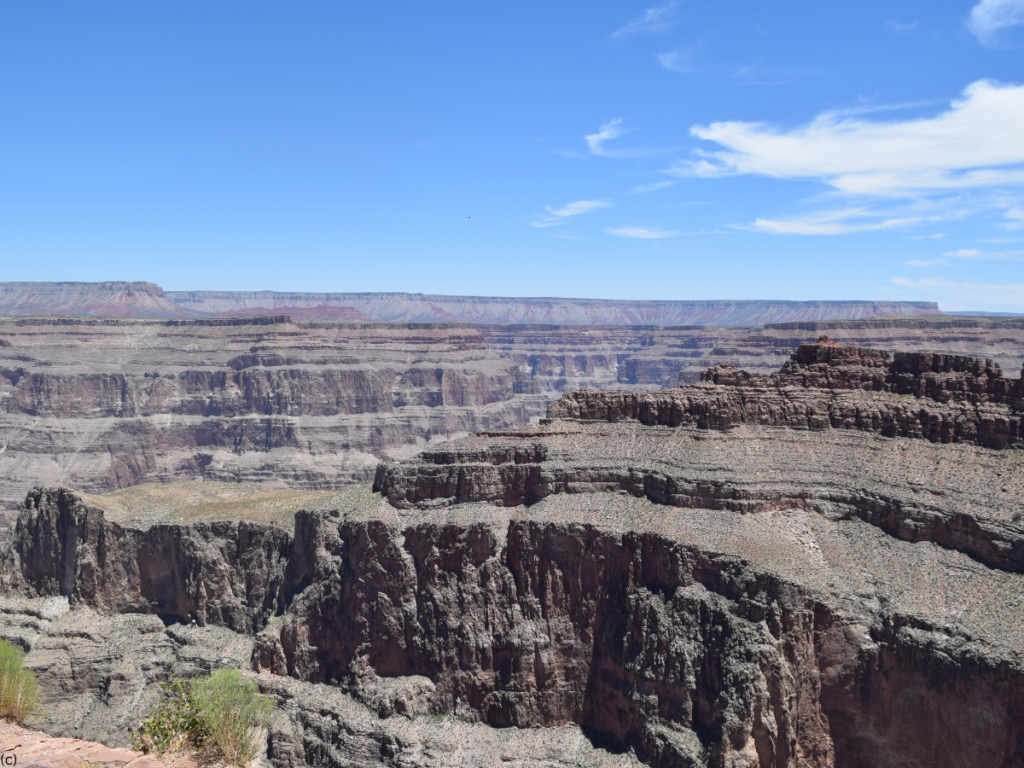
The Grand Canyon West Rim offers a unique and unforgettable experience, combining the natural beauty of the canyon with the rich cultural heritage of the Hualapai Tribe. Whether you’re standing on the glass-bottomed Skywalk, taking in the panoramic views from Guano Point, or learning about Native American culture at Eagle Point, the West Rim provides a fresh perspective on this world-famous destination.
With its accessibility from Las Vegas, variety of attractions, and stunning scenery, the West Rim is an excellent choice for both first-time visitors to the Grand Canyon and those looking to explore a different part of this iconic landscape. By following the tips and advice in this guide, you’ll be well-prepared to make the most of your visit and create memories that will last a lifetime.
